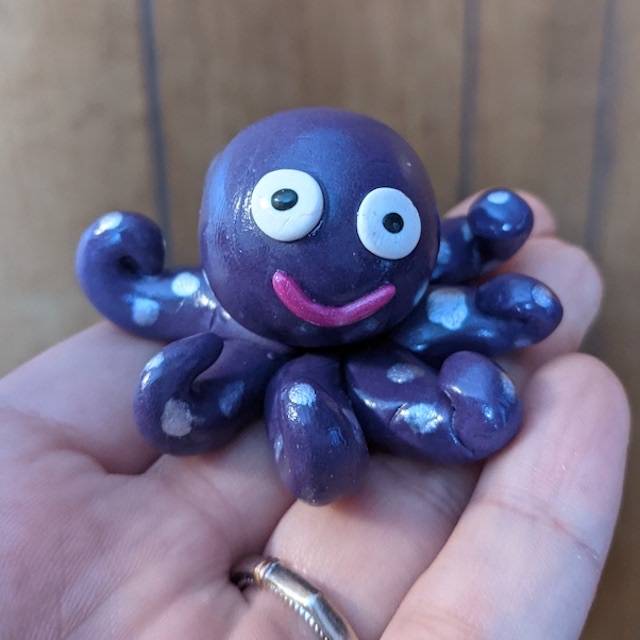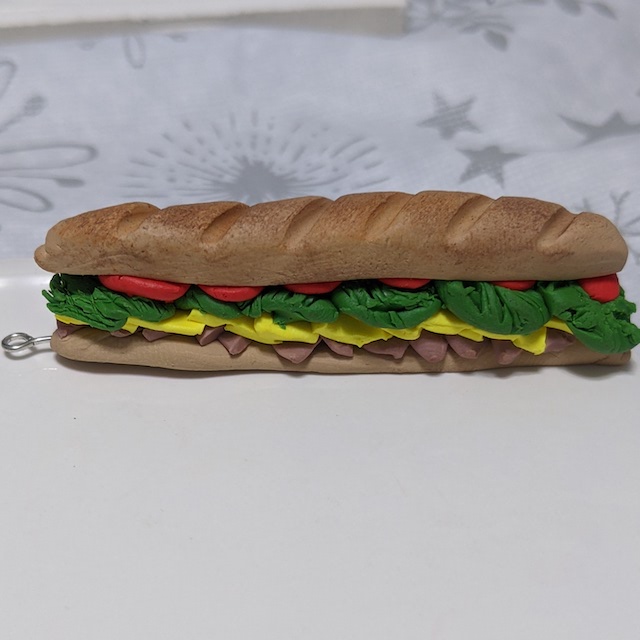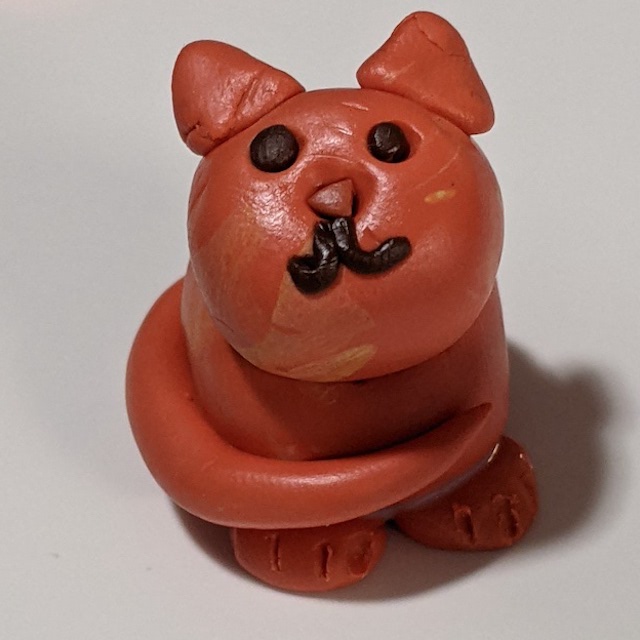Polymer Clay and Delayed Gratification
January 16, 2021




I've been exploring a new hobby in the last couple months: creating jewelry and miniature sculptures with polymer clay. Polymer clay is a synthetic clay made of plastic (polymer) fibers that stay malleable until the clay is baked, at which point they fuse together. It can be used to make so many different things, and is especially popular for making jewelry and tiny sculptures, especially tiny food.
Part of what makes polymer clay so great as a hobby is that gratification comes in stages. It's not just start, sculpt, done. There's a lot of different stages to making something and every step is very satisfying to complete.
First you mix colors, and feel good when that's done. Then you make a sculpture or a slab of clay in a particular pattern, and feel good at how that looks. Slabs can have many stages, too - you might make a cane, or log of clay with a design that is revealed when you cut into it, and need to rest the clay before you squeeze it into a smaller size (aka reducing the cane). Then you cut into the reduced cane, and cross your fingers that the design you hid inside is still there. Slices of the cane can be laid flat to make a slab using the pattern from inside it. If you're making jewelry, the next step is to cut out the shapes you want, and that's a pretty satisfying task, too. Then it's got to bake (wait), then varnish (wait), then add whatever hardware (wait, if using glue). After each step is completed, you get a feeling of pride in what you've accomplished.
Baking the clay I use (Sculpey Premo or Souffle) takes half an hour for every quarter inch of thickness. So earrings bake for half an hour, but a bigger sculpture might bake for two hours. After baking, it's best to let the clay cool a bit before removing it from the oven, to make it stronger. Then you take it out and hopefully feel good at having that step completed! (Usually clay should look just like it went in, but sometimes it can burn or crack. The colors might darken a bit if you mixed some of your colors using translucent clay, but otherwise, the colors should stay the same in the oven.)
The varnish I use is ready for a second coat after half an hour of drying, but should really sit for a full 24 hours before it's fully dry. Things I glue on with E6000 glue, like earring backs or pin backs, require another 24 hours (at least!) to dry completely.
All in all, polymer clay is a really satisfying hobby. You can go from not knowing anything about it to making things you feel really proud of incredibly quickly, with lots of stages of accomplishment along the way.
Webmentions: None yet!
These are webmentions via the IndieWeb and webmention.io.